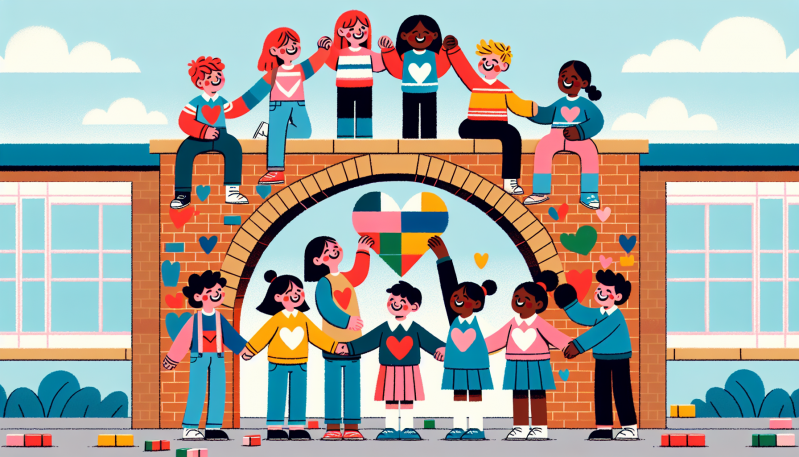Imagine a school where every hallway whispers stories of kindness, every classroom echoes with voices of support, and every child walks with the confidence of being seen and heard. This isn’t a distant utopia; it’s a tangible reality that peer mentoring programs are crafting within the walls of educational institutions across the globe.
Peer mentoring is more than just an educational strategy; it’s a bridge that connects students to a network of care, guidance, and empathy. When schools implement peer mentoring programs, they’re not just offering help with homework or a friendly nudge toward the right social group; they’re igniting a chain reaction of positive change that resonates through every aspect of school culture and student well-being.
For mentors, the experience is an avenue for developing leadership skills, empathy, and a sense of responsibility toward their peers. As they guide their mentees through academic challenges and social intricacies, they also consolidate their own knowledge and hone their problem-solving capabilities. The mentors often find joy in their mentee’s success, and this shared happiness creates an environment of mutual respect and celebration.
Mentees, on the other hand, receive the gift of a guiding star in the form of their mentor. The academic assistance is invaluable, of course, but the emotional support is the true cornerstone of the relationship. Mentees learn to navigate the stormy waters of school life, buoyed by the knowledge that they’re not alone. The companionship helps dispel the clouds of loneliness and the fears of inadequacy, promoting mental health and a sense of belonging.
Educators and parents play pivotal roles in facilitating and nurturing these programs. They are the architects who design the framework of support, enabling the mentors and mentees to connect and thrive. Through their encouragement and oversight, peer mentoring programs can be effectively integrated into the school curriculum, ensuring they complement academic goals while enhancing student life.
Success stories abound, painting vivid portraits of transformed school cultures. Schools that have embraced peer mentoring report lower incidences of bullying, heightened academic engagement, and an overriding atmosphere of inclusivity. Diversity, equity, and inclusion are no longer just buzzwords; they become the lived experience of students who find their voices and spaces in a community that values every individual.
However, the path is not without its hurdles. Challenges such as funding, mentor training, and program sustainability must be addressed head-on. Solutions lie in a collaborative approach, one that leverages community resources, engages stakeholders, and continuously seeks innovative ways to keep the programs relevant and engaging.
As we reflect on the potential of peer mentoring, we must remember that the true measure of its success lies in the smiles of children who feel empowered, the gratitude of parents who see their children thrive, and the satisfaction of educators who witness their schools transform into havens of growth and well-being.
Let’s not underestimate the ripple effect of peer mentoring. What starts as a small wave of connection can amplify into an ocean of positive change, ensuring that the future of education is as bright and as promising as the students it serves.



